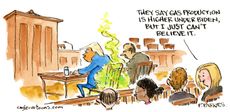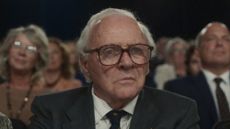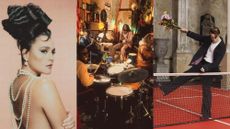Germany: memories of a Nation – exhibition reviews
British Museum's 'hugely ambitious' show tells story of Germany's traumas and triumphs

What you need to know
Germany: Memories of a Nation, a new exhibition examining 600 years of German history, has opened at the British Museum, London. The show, timed to coincide with the 25th anniversary of the fall of the Berlin Wall, presents 200 objects signifying Germany's cultural and political changes from the Renaissance throughout the troubled 20th century to the post-war economic recovery.
It features art by Albrecht Durer, Hans Holbein and Gerhard Richter, a Gutenberg bible, design from the Bauhaus movement and modern icons such as the VW Beetle.
Subscribe to The Week
Escape your echo chamber. Get the facts behind the news, plus analysis from multiple perspectives.

Sign up for The Week's Free Newsletters
From our morning news briefing to a weekly Good News Newsletter, get the best of The Week delivered directly to your inbox.
From our morning news briefing to a weekly Good News Newsletter, get the best of The Week delivered directly to your inbox.
The show is being staged in collaboration with the BBC, which will feature museum director Neil MacGregor's Radio 4 series of the same name. Runs until 25 January.
What the critics like
Weighty moral questions lie at the heart of this exhibition, which "addresses those themes explicitly and imaginatively", says Peter Aspden in the Financial Times. The story of Germany is told through objects that have been chosen for their complicated micro-histories and there are rich metaphorical pickings everywhere you look.
The exhibition has "a way of using small but hugely significant items to evoke a myriad of different eras and aspirations, traumas and triumphs", says Richard Morrison in The Times. And it offers a myriad of antidotes to all those tabloid stereotypes of Europe's most powerful nation.
This "highly contentious and hugely ambitious exhibition" attempts to tell an object-led narrative of the German-speaking peoples, says Marina Valzey on the Arts Desk. The spectrum is very broad, but every object on view is worth looking at, and even more, thinking about.
What they don't like
It is "a potentially fascinating exhibition let down by unimaginative presentation, with far too many exhibits crowded together with far too much text", says Mark Hudson in the Daily Telegraph. With more stringent selection and radical design, the objects might have told a genuinely powerful story.
Create an account with the same email registered to your subscription to unlock access.
Sign up for Today's Best Articles in your inbox
A free daily email with the biggest news stories of the day – and the best features from TheWeek.com
-
 Today's political cartoons - April 27, 2024
Today's political cartoons - April 27, 2024Cartoons Saturday's cartoons - natural gas, fundraising with Ted Cruz, and more
By The Week US Published
-
 Aid to Ukraine: too little, too late?
Aid to Ukraine: too little, too late?Talking Point House of Representatives finally 'met the moment' but some say it came too late
By The Week UK Published
-
 5 generously funny cartoons on the $60 billion foreign aid package
5 generously funny cartoons on the $60 billion foreign aid packageCartoons Artists take on Republican opposition, aid to Ukraine, and more
By The Week US Published
-
 The Westbury Hotel review: stunning suites in charming Dublin
The Westbury Hotel review: stunning suites in charming DublinThe Week Recommends This hotel is the perfect spot to while away a weekend in Ireland's capital
By Kaye O'Doherty Published
-
 Drama movies 2024: new films out this year
Drama movies 2024: new films out this yearIn Depth Latest reviews include The Boys in the Boat, One Life and Tchaikovsky's Wife
By The Week UK Last updated
-
 Best new hotels and places to stay in 2024
Best new hotels and places to stay in 2024The Week Recommends Featuring stylish island resorts, historical properties and wilderness retreats
By The Week UK Last updated
-
 Albums of the year: best music of 2023
Albums of the year: best music of 2023The Week Recommends A look back at the best pop, rap, jazz, dance, classical and rock releases
By The Week UK Published
-
 Savoy Grill by Gordon Ramsay review: an institution reinvented
Savoy Grill by Gordon Ramsay review: an institution reinventedThe Week Recommends Traditions are maintained and the tweaks are clever and modern
By Neil Davey Published
-
 Tulum: a Mexican beach town of 'two halves'
Tulum: a Mexican beach town of 'two halves'The Week Recommends With the 'pueblo' and 'Zona Hotelera', Tulum is home to great hotels, restaurants and beach clubs
By William Leigh Published
-
 La Zebra review: beach chic, perfect tacos and secret cenotes
La Zebra review: beach chic, perfect tacos and secret cenotesThe Week Recommends Enjoy a stylish stay in Mexico at this family-friendly beach hotel and restaurant
By William Leigh Published
-
 Atlantis Paradise Island Bahamas review: a mythical beachside resort
Atlantis Paradise Island Bahamas review: a mythical beachside resortThe Week Recommends Combine the classically simple pleasures of sun, sea and sand with upmarket fun and food
By Adrienne Wyper Published